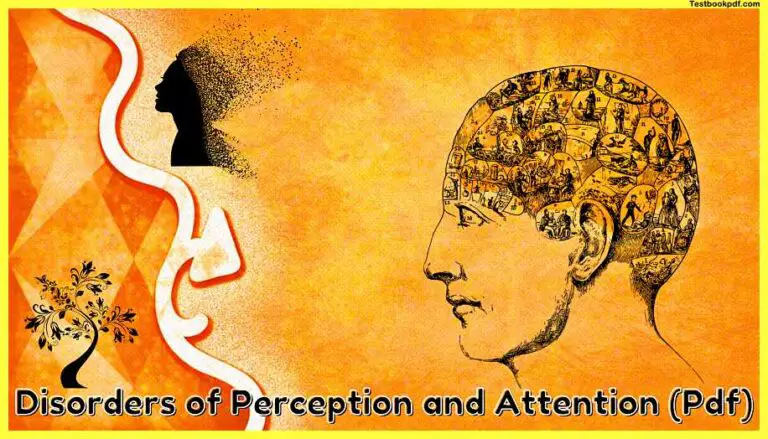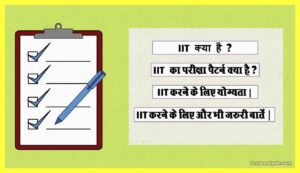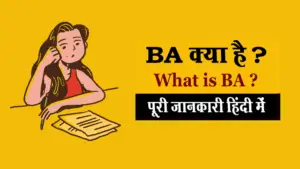Disorders of Perception and Attention Pdf
Today’s Topic is related to Disorders of Perception and Attention Pdf, So Today I will begin a series on the disorders of these cognitive functions that we have studied and today’s article will be about disorders of attention and perception the cognitive functions we studied first of all during the beginning of the course now some of you might ask that why there is a need to study a disorder machine that is not really working well but the point is that a well-functioning machine or a well functioning system does not really tell us a lot about.
- How the machine would function?
- How the parts are related to each other?
- How do they work together with each other and those kinds of things?
It is sometimes only when a machine is broken you would actually realize that your okay part a is connected to part b in a particular manner and those kinds of things.
We will talk about synaesthesia and blindsight:
- In Synaesthesia we will focus on the nature of synaesthesia, experimental studies of synaesthesia, and brain imaging studies of synaesthesia.
- In blindsight, we will focus on the stray light hypothesis and spare islands of residual vision.
- In disorders of attention, we will focus on unilateral spatial neglect, visual agnosia- apperceptive and associate agnosia, form and integrated agnosia, and prosopagnosia.
Now, this is precisely why it is very important to study the cognitive functions and their disorders at the same point so what we will be trying to do in the article after this one is basically cover the disorders associated with the cognitive functions that we have covered in this course this will basically give us an idea about how the theories that we have been reading about pan out in real life scenarios where there are people who are afflicted with these disorders and how do these theories help us understand those disorders the causes of those disorders also whether these theories can help us rehabilitate or help out these people who are suffering from these disorders so this is pretty much the basis of the pretty much the reason why I have included the disorders of these cognitive functions as the last two articles of this particular course.
Disorders of perception
So today we will be talking about perception disorders and attention disorders I will begin with an interesting disorder of perception then maybe we will go on to a couple of disorders which have to which have more to do with attention than perception.
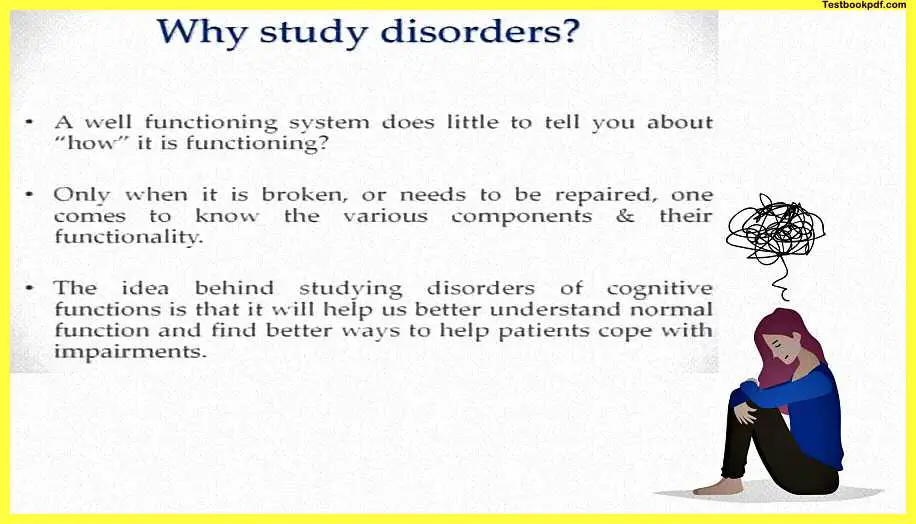
Let me begin by describing a very interesting case so have you ever wondered questions say questions like what color is number seven offers particular color is number three or four of a particular color well what does Monday taste like if somebody asks you that Tuesday tastes better or Monday tastes sweets how do you really react to those things like say for example what would it mean to touch a particular color so these kinds of questions might seem slightly metaphorical slightly poetic to you but you will be amazed to know that there are a class of people there is a small minority of people that enact that actually experiences these things there is this class of people that actually experiences color whenever you mention to them a particular letter or a particular number now these classes of people are called synesthetes persons having synesthesia/.
What is synesthesia?
Synesthesia basically is that condition wherein a person if it is if he or she is presented with a particular stimulus and might simultaneously experience and consistently experience another sensory event at the same point in time so when people with synesthesia are presented with a stimulus they will tend to consistently and automatically all the time experience another sensory event whenever you mention a letter to this person he will experience a color simultaneously and the experience will be so joined that it would feel like that letters are of a particular color there was this description in one of the books I have been reading.
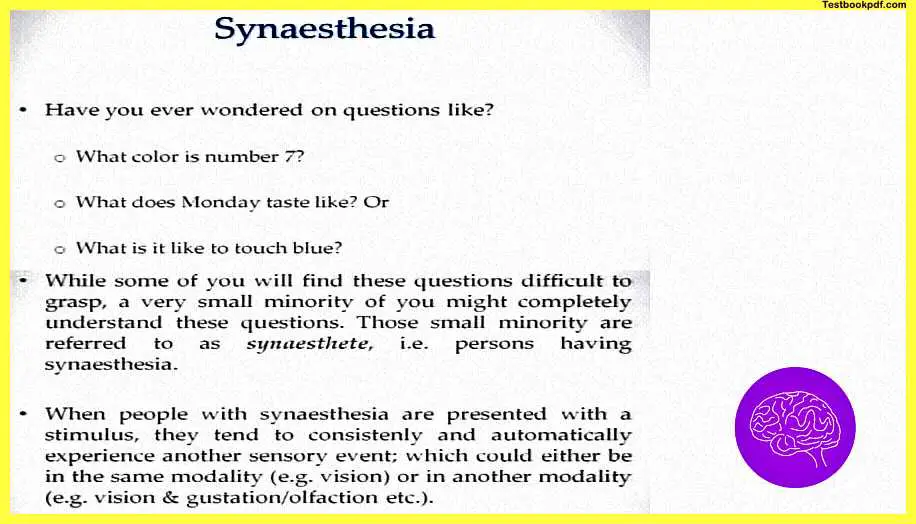
So the material from here is basically inspired from david groom’s book introduction to cognitive psychology processes and disorders and one of the cases he mentions is basically about a particular child who comes back home from school and mentions to the parent that i have been having trouble with this yellow colored seven or i have been having troubles with the blue colored eight and the parent is kind of surprised at what this person is saying and this child does not really know that it is a special condition he would assume he would have been assuming that this is exactly what everybody feels like so interesting cases or synesthesia you might actually things like youtube and find so many videos have been compiled on the experience of synesthesia on what it feels to be like to be a synesthete and what do these different experiences actually involve so we’ll try and cover the theoretical and we’ll try and cover the demonstration part the discussion part on synesthesia while there might be a lot of videos you might find on the internet which will help you experience the condition more closely now the commonly reported experiences in synesthesia include experiencing a color or seeing or hearing a letter a letter or a number or even words for that matter.
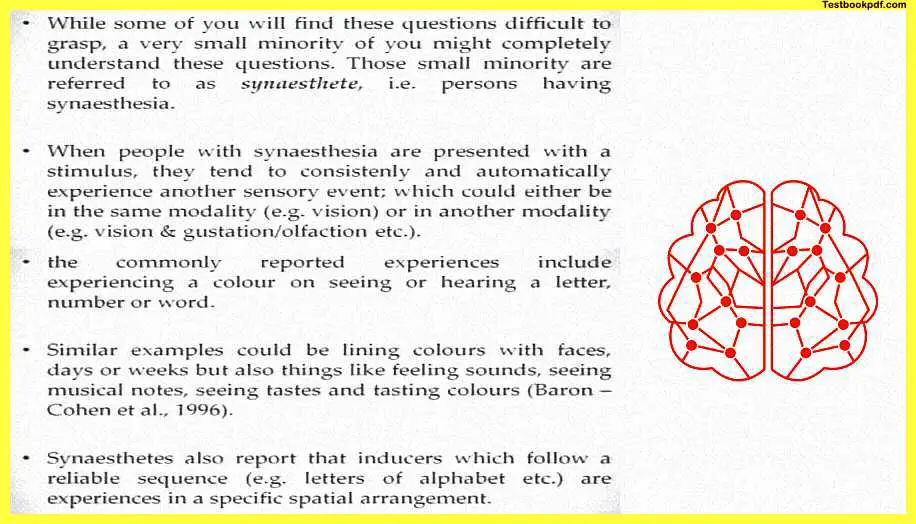
So if you tell somebody about particular letters of the alphabet they might report back experiencing colors simultaneously if you’re saying specific words they might tell you that you’re having this particular synesthetic experience at the same time it could also be that some people might be linking colors with faces days or weeks but also things like they might say that I feel this sound in a particular way or I see the musical notes in a particular way and seeing taste and tasting color something like this baron cohen and colleagues has done a lot of research in the area of synesthesia and a lot of it is published some of the common papers are in 1996.
Now synesthetes basically the people who have this exquisite ability also report that inducers generally follow a reliable sequence of particular kinds of letters and will reliably produce very consistent color sequences a particular kind of say for example if somebody is experiencing spatial arrangements particular letters will induce very specific spatial arrangements at the same time.
Why do we study disorders?
Now early incidents of synesthesia, when it was first reported, were basically in a very famous paper by baron cohen and colleagues in 1987 and they were examining a synesthete called ep who called herself an artist who has experienced a lifelong condition of hearing words and sounds in color so this person actually ep is an interesting tale she has given out an advertisement in the newspaper asking people to come and explain the condition she was having so baron cohen basically tested and established the replicability of synesthetic experiences actually establishing that she was undergoing these experiences and these experiences were consistent and automatic over a period of time the comparison was typically like 100 percent of eps and synesthetic experiences were replicable she could replicate and tell them constantly what she was experiencing while only seventeen percent of non-synaesthetic controls could actually repeat that kind of performance.
Now for many synesthetes the color induced by the first letter determines the color of the entire word say for example if you have a condition wherein you will see yellow color every time you come across the letter c then any word that starts with c will be colored yellow for you but with ep, it was special in the sense that each letter of the word would in use separate colors and she would actually experience the word as a mix of all of these colors now this was interesting and this test was basically done with her on pseudo words which do not have any meaning at all so you could just combine letters in a particular sequence that is pronounceable but not really is a meaningful word so that was done now we can talk about let us proceed to talk about the nature of synesthesia what is synaesthesia actually like.
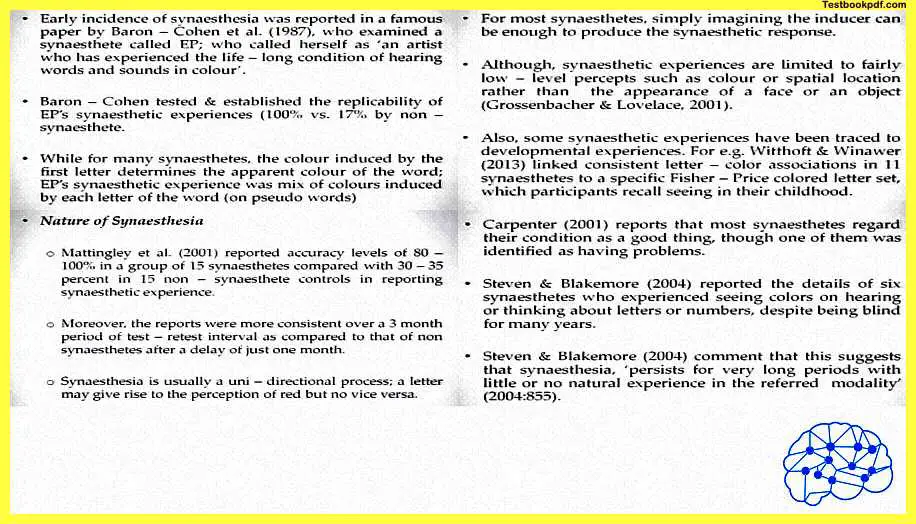
Now Mattingly and colleagues in 2001 they reported accuracy levels of around 80 to 100 percent in a group of 15 synesthetes compared with 30 to 35 percent in a group of 15 non-synesthetic controls in reporting the synesthetic experience so it has been again verified and multiple times reported that the people who are basically having this condition are almost 80 to 100 percent times accurate in the reporting of what they are actually feeling also there were reports of a more reports by synesthetes was more consistent over a longer period of three months test-retest intervals as compared to that of non-synesthetic controls even after one day one month delay of testing so if you test synesthetes experience over a longer period of time for three months and you compare the non-seniors these experience even after one month of time there will be lot of gap there will be a lot of non-match between these performances this kind of tells us that this experience is real and this experience is replicable and the people are actually undergoing this particular experience.
Now synesthesia usually is a unidirectional process say for example if a letter induces a particular colour the letter will consistently automatically and always induce that particular colour but it is important to remember that the colour will not induce memories of that letter so if you are seeing that colour say for example at some unrelated place that color will not remind you of that letter so inducers and targets so there is this concept in synesthesia that there are inducers which induce the synesthetic experience the simultaneous sensory experience of the other modality but it does not really kind of transfer from target to the inducer so synesthesia is a unidirectional process for most synesthetes simply imagining the inducer can also lead to synesthetic response if i were a synesthete and i was thinking of the letter c or a letter p and let us say as i already said let us see might induce yellow color letter p might induce a blue color while saying this while already even imagining the these letters i would assume to have this synesthetic experience of experiencing this color.
Now although synesthetic experiences are limited to a fairly low level perceptual state such as colors or spatial locations there rather than the appearance of a face or an object so they are basically very low level perceptual things say things like color spatial arrangements those are typically things that get associated with a particular synesthetic experience not really very complex things like faces or objects or events and those kind of things also some synesthetic experiences have also been linked to developmental experiences so some of these synesthetic experience have been shown and with often vine hour basically in 2013 they linked consistent letter and color associations in eleven seniors thiets to a fisher price colored letter set so for example these participants would have learned their letters learned their alphabets through this fischer prize set is basically a set of toys which had colored letters and probably these people recall seeing those letters in the specific colors produced by the fisher price people this is a toy company that is and they kind of made those associations to such an extent that it led to the synesthesia happening so this link has also been made however there is nothing to say suggest here that there is a causal relation it is just a coincidental deletion which has been traced by without inventor in their 2013 paper.
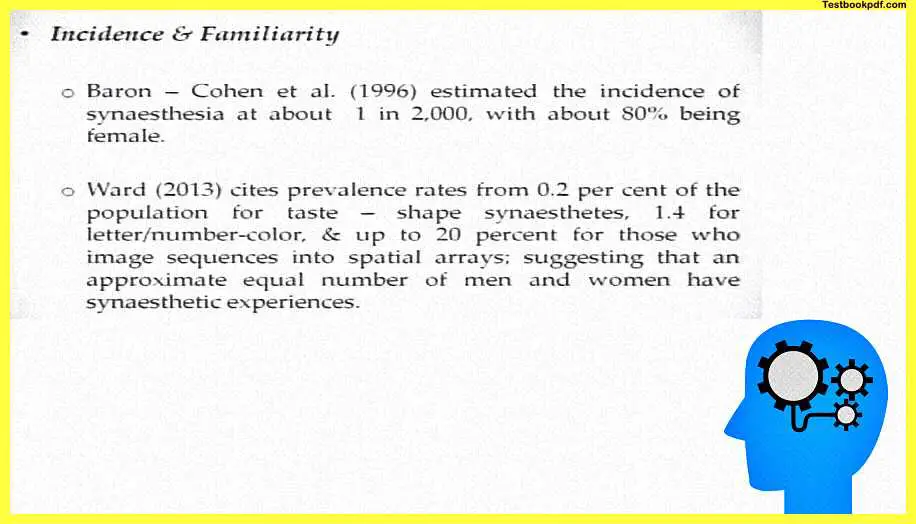
Now carpenter 2001 reports that most regard their condition as a good thing they do not really mind having that condition they are not really particularly troubled by having that condition though they also report one of the patients who said that this was becoming a problem for him to handle for the most part this is not really a debilitating experience of any kind this is rather an experience that people have and they interpreted in various ways but not really as rather troublesome or one of the patients as I already said reported having some kind of trouble with this.
Now Stephen and Blakemore 2004, reported the details of six anaesthetes who had experienced seeing colors on hearing or thinking about letters or numbers despite having been blind for a lot of years so they are not blind anymore but they experience seeing colors even though they did not really have a lot of experience in seeing colors for a long time so steven Blakemore basically commented that this suggests that synesthesia perceives for persisting for very long periods of time with little or no natural experience in the preferred modality.
Now let us talk about the incidence and the familiarity of synaesthesia baron Gohan and colleagues in the 1996 paper estimated the incidence of synaesthesia at about one in two thousand individuals with about 80% of the patients being 80% of the affected being females what in two thousand thirteen cites prevalence rates of 0.2% for the population they could taste a shape 1.4 for letter or number versus colours in a street so these people will experience color when they will hear a particular letter or a particular number and up to 20 percent for those who image sequences into a spatial arrays suggesting that an approximate approximately equal number of men and women both have synesthetic experience so this last kind of people they will actually put events in a special arrangement that x happened first and then y happened and they all arrange all of their experiences in a spatial manner so these are the different kind of synesthesias possible and we also discuss about the kind of incidence rates for these synesthesias.
Experimental Studies of Synaesthesia
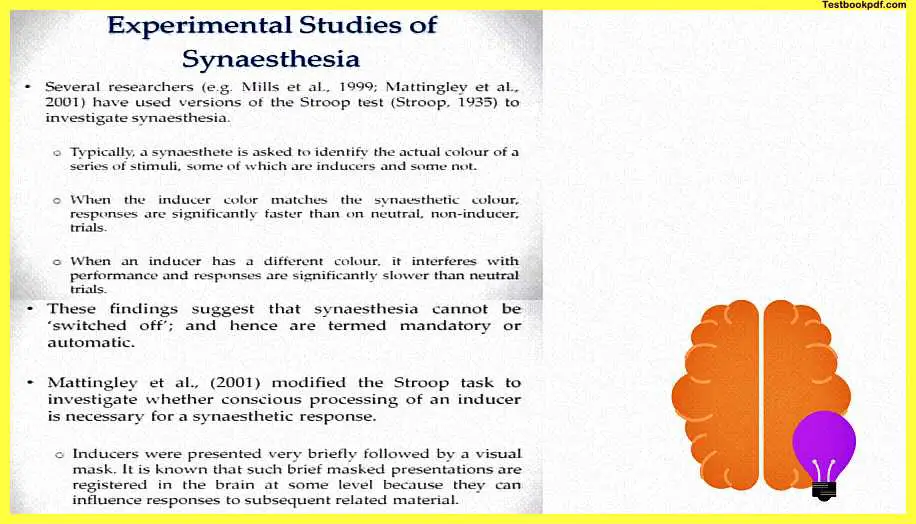
Now there has been a lot of experimental research with synesthesia since this is an interesting phenomenon itself so several researchers basically have used the versions of the Stroop test proposed by jr’s troop in 1935 to investigate the occurrence of synesthesia if just to remind you Stroop test is basically wherein you are asked to name letters which are in some colored ink you are asked to name read these words out and say for example it could be a blue written in a green ink it could be green written in blue ink and so when you are reading blue and one of the things is us so you can either be asked to read the letter or you can either be asked to name the color of the ink and because these two pieces of information are both automatic you will see the color immediately and you will read the word immediately there is a conflict between these two sources of information and participants have reported slowing down in naming these colored words because of this interference.
Synesthesia
Let us see typically a synesthete is asked to identify the actual color of a series of stimuli so they will be colored words or color letters or numbers and these participants will ask to tell what the color of these stimuli are now some of these stimuli are actually inducers so they will induce some different colors some they could be a letter let us say there could be a word called cap and cap basically will induce a yellow color because c stands for yellow as we’ve been talking about now when the inducer color say for example matches the synesthetic colors the word is written in yellow and it induces the yellow color itself then the responses will be significantly faster compared to when the inducer color is different and the stimulus of a different color so this basically the second part will interfere with the performance and the responses are found to be significantly slower than on neutral trials so this is something which they found out and these findings are taken to suggest that synesthesia is something that cannot be switched off its almost as automatic as reading a word when you are presented with the word and hence they are termed as mandatory processes or automatic processes now matingly in colleagues in 2001 they modified this troop task a bit to investigate whether the conscious processing of an inducer is necessary for a synesthetic response.
Now see we have been talking about when a person comes across an inducer a target synesthetic experience is generated almost automatically consistently and all the time now they wanted to test whether it is necessary to consciously perceive the inducer if the inducer is presented in such a way that you cannot consciously perceive it whether it would still cause the synesthetic experience so what they did was that they presented induces very briefly followed by a visual mask let us say for a period of around 35 to 50 milliseconds below which it is not possible to consciously experience something and then you hide this off with a particular mask that comes after it so it is known now that such brief and mass presentations are registered in the brain at some level but they can influence the responses of the participants in ways which we have discussed earlier in priming studies etcetera.
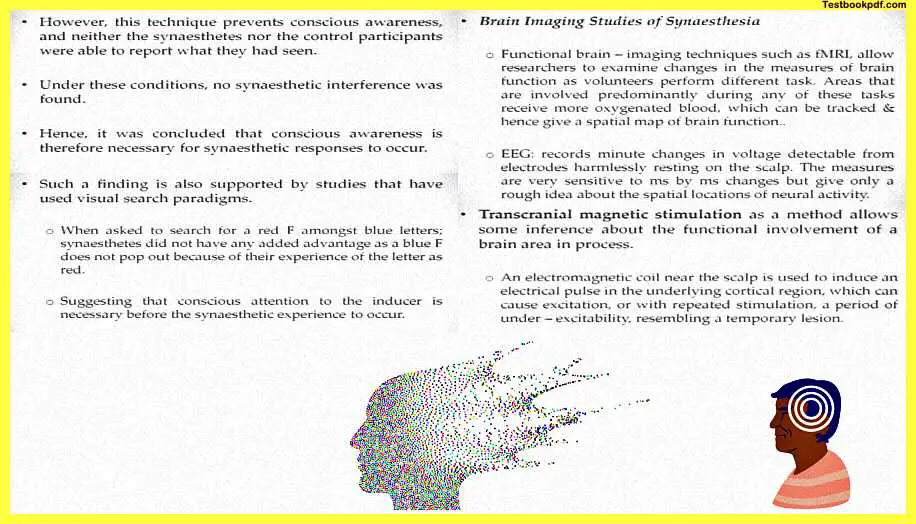
Now this technique incidentally prevents conscious awareness of these kind of stimuli which you are presenting and neither the synesthetes nor the control participants in this kind of arrangement were able to report what they had seen so they are not really conscious of whatever was presented to them under these kind of conditions no synesthetic interference was found none of these individuals also reported having a synesthetic experience of any kind so it was concluded and reliably so that conscious awareness is therefore necessary for the synesthetic experience to occur so we know a few things of synesthesia by now that it is a automatic mandatory process it cannot be switched off it is consistent happens all the time and now also we know that the inducers need to be consciously perceived for synesthesia to occur such a finding has also been supported by studies that have used visual search paradigms so when asked to search for a red f among blue letters synesthetes did not have any added advantage as a blue f will not pop out because of their experience of the letter as read ok so in a visual search scenario the property of that letter being an inducer also does not make it stand out in any sense it does not lead to any significant advantage per se it also suggests that conscious attention to the end user is therefore necessary before the sinister experience can actually set in in visual search scenarios you will see a lot of time your search is not really consciously you are probably looking at one thing but you are unco but you are in a covert attention way looking at some other things as well.
Now let us talk about a few brain imaging studies of synesthesia just to revise fmri or functional brain imaging techniques basically allow the researchers to examine changes in the measure of brain function as volunteers perform different tasks areas that are predominantly active during any of these tasks receive more oxygenated blood and which can be tracked and hence one can generate a spatial map of brain function say for example if there is the fusiform gyrus which is known to be involved in phase recognition that is the area which will start receiving more blood and there are ways to trace more blood in a particular area as compared to less blood in other areas other ways is eeg electroencephalography or erp event related potentials these basically these methods record very minor changes in a voltage and detectable from electrodes that are rested on the participant’s scalp and these measures are very sensitive to millisecond level changes that are happening in brains processing so they give us a very good temporal resolution of how processing in the brain is happening though they’re not really able to give us a very good spatial resolution of where this processing is happening so there’s a second thing we’ve probably done all of this in the methods part i am just kind of doing a revision here.
Transcranial Magnetic Stimulation (TMS)
Transcranial magnetic stimulation TMS is also one of these methods that allow for some inference of the functional involvement of the brain areas so what happens here is there is an electromagnetic coil that is placed on the scalp to induce an electrical pulse in the underlying cortical region so it is basically a coil and you place it on the head and it kind of in induces a magnetic field in the cortical region.
Now what this does is it leads to either excitation or inhibition of that particular cortical area and can be used to either test the excitability or the involvement of that area in any given task which you will give to the participant after that now there have been studies using these kinds of methods with the synesthetes and one of them I will just mention so none in colleagues in two thousand two they used fMRI to report that synesthetes showed increased activity in the area v4 of the occipital lobe and this area v4 is basically the region that is connected with color perception and when this activation was found when these participants were actually listening to the inducer compared to the non-inducer version if you are listening to these letters and if you are a synesthete there is a certain activity actually going on in the color percept color perceiving areas of your brain verifying for the fact that you are in actually experiencing those colors.

Now this signal was not found in non-synesthetic control participants who had also been asked to associate colors and words so it is not something that you can learn and start having an experience of it is something that is a condition and that is there by itself you cannot really learn to have synesthesia for that matter these kind of consistent findings were also supported by Hubbard and Ramachandran in their paper in two thousand five now these findings tell us something about the synesthetic color experience and they tell us that it basically is based on the real experience of color its not that somebody is associating a particular letter with a particular color is actually happening in the brain when you listen to that letter you do experience that color very reliably some of the other studies have also failed to detect similar activity and there are suggestions that different forms of synaesthesia may be associated with different patterns so again these kind of linkages with the brain and with these areas of synesthesia are also have also been established.
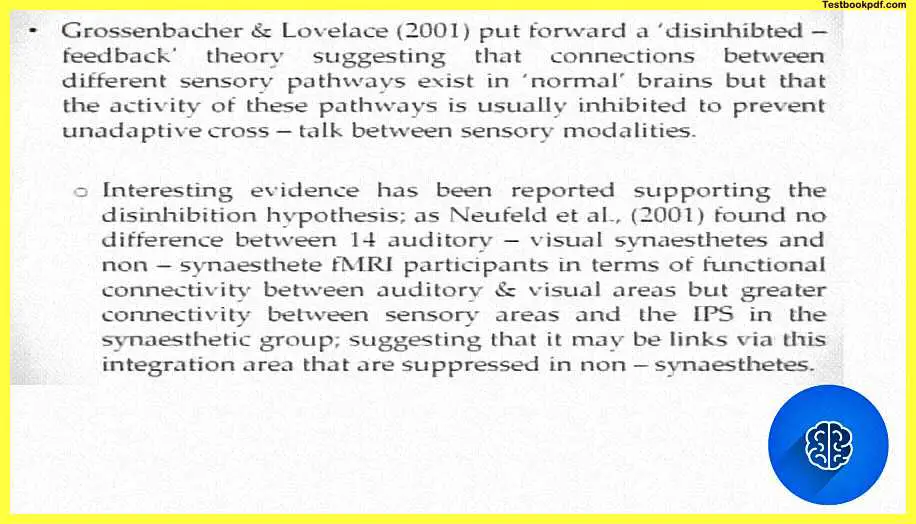
Now coming to the coming to summing up what synesthesia was about let us talk a little bit about the theories that have attempted to explain synesthesia one of these theories maintains that all of us were synesthetes at one point in time during early stages of childhood when say for example we were growing up but we lose these connections between these different sensory experiences during the course of development probably because these are unadaptive and they are not fruitful for any meaningful interaction with the world ramachandran and hubbard point out that the brain areas involved in color perception areas like v4 are actually immediately adjacent to the areas involved or areas that become active during reading of letters it might be just a coincidence or it might not be a coincidence that these areas are very close together the grosenbacher and lovelace they basically put forward a particular hypothesis called the disinhibited feedback theory and the disinhibited feedback theory proposes that connections between different sensory pathways exist in normal brains but that the activity of these pathways is usually inhibited to prevent unadaptive crosstalk between these sensory channels interesting evidence has been reported about this disinhibition hypothesis.
For example, new fields and colleagues in 2001 found no difference between the 14 auditory-visual synesthetes and 14 non-synesthetic participants using fMRI in terms of the functional connectivity between the auditory and visual areas but they found greater connectivity between the sensory areas and the ips in the synaesthetic group suggesting that it may be the links via this integration area that is the ips that are suppressed in non-synesthetes but are not suppressed in senior seats and that is what is allowing them to have this multimodal multi-sensory experience.
blind Sight
Now we have talked a little bit about synesthesia let us move our attention to a different kind of disorder again since there was a disorder of perception there is another disorder called blind Sight now popular by colleagues in 1973 who were studying a group of ex-servicemen who had suffered visual field deficits as a result of gunshot wounds to their extra straight or straight cortex and to their straight cortex and they ask these participants to make judgments about the correct location of a flash of flight presented to their blind Sight so the idea was that these people have lost sight in a particular visual field because of the injury in the stride cortex and then what these people are asked to do is that people show a flash of light in the blind region and they will be asked to detect it or try to detect it.

Now as the servicemen could not see the flashes the light was paired with the sound of a buzzer and on hearing the buzzer these were these people were asked to move their eyes in the direction which the flashlight was while the servicemen found this a very difficult task almost all of them were able to gaze their eyes to move their gaze towards the light which actually which basically they cannot see so this was a very interesting phenomenon how are these people being able to move their eyes to the direction of the flash even though they cannot really see the flash so the buzzer is just a hint that there will be a light flash but it does not in any way tell you about the location of the flash so these people are in some ways being able to decipher where these flashes of light are occurring even in their blind visual field.
Now vice grants in 1974 he describes a patient DB who seem to demonstrate the same kind of a remarkable ability he could report the details of objects appearing in the blind areas of his visual field despite having no conscious experience of seeing them so if let us say if this person is blind in the right visual field if you keep an object somewhere there this person after some time will be able to tell you what have you kept or the general shape and whether this is moving or those kind of things even though he is reliably shown to be blind in this area completely now they did this series of experiments wise friends and colleagues they did this series of experiments with DB and they basically systematically were trying to investigate the perceptual abilities preserved in the blind areas of DB so DB it was found that DB was able to detect the presence of an object indicate its location in space by pointing it also discriminate between moving and stationary objects horizontal and vertical lines and could also even distinguish the letter x from o if it was presented in the blind area.
Now this is something completely interesting so vice grants basically names these phenomena as blind Sight let us talk about the blind Sight a bit more kovi in 2004 summarizes the arguments put forward by skeptics such as champion at all so a lot of people were actually skeptical about whether blindside is a real phenomenon at all so people like campion and colleagues they basically favored what is called the stray light explanation.
Stray Light
So they said that these participants are basically being able to detect these objects in the blind visual field because of stray light that is reflecting from around the areas and falling in the region where they can see so the stray light hypothesis goes like this champion and Colleeks they favored the stray light explanation of blind Sight which suggested that the blind Sight patients responded to light reflected from the object onto the functioning areas of the region so this is what the strain lie definition is now they were describing a patient who reported that he actually used such a strategy to distinguish between a vertical and horizontal bus presented to the blind areas of his visual field.
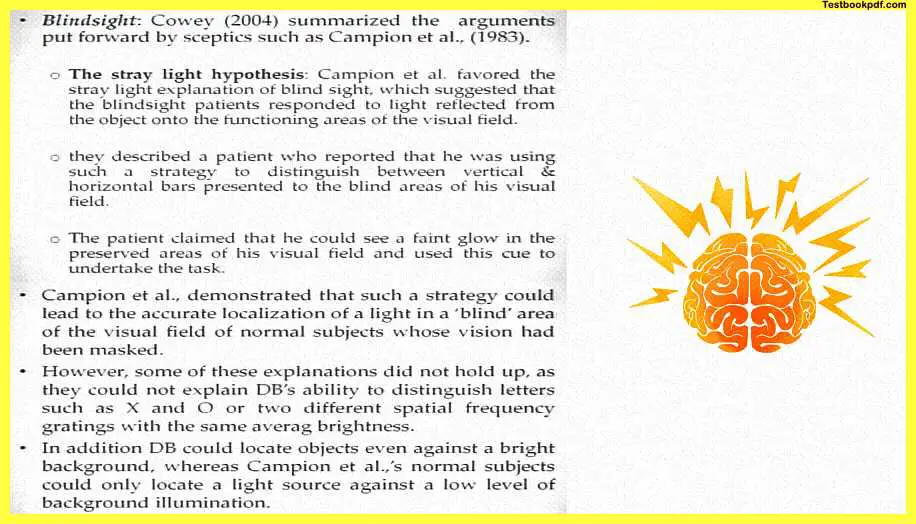
Now, this patient claimed that he could see a faint glow in the preserved areas of the visual field and use this cue to undertake this particular task so it could be shown that people are not entirely blind and they are not being they are not really using the blind area to decipher the where the light flashes they are actually using light reflective from a different source and using that as a queue to actually guess where this trail and where this light flash will be now campaign and colleagues demonstrated that such a strategy could actually be used and could be utilized to get an accurate localization of light in a blind area of a person’s visual field of normal subjects whose vision had been masked.
So you put a mask on these people’s vision and you will see that these people can also use this tray lightly to locate these things however some of the explanations given by these stray light theorists did not really hold up as they could not explain DB’s ability to distinguish between letters such as x and o or two different spatial frequency gratings with the same average brightness, in addition, DB could also locate objects even against a rather bright background wherein you will not really be able to use this stray light explanation very favorably so whereas campaigns normal subjects could only locate this light source against a low-level background illumination.
Spared Islands
So if there is a flash of light and you can locate it even against a bright background it tells you that you are probably not using the reflection of the light another theory that talks about blindsight were given by wesinger in colleagues in 1997 and they suggested that blindside was attributable to small areas or islands in the scotu must go to minus basically the areas of blindness in the visual field within which vision is spared and that blind side may be mediated by what is left of the primary visual pathway rather than other secondary pathways.

So they are saying that there might be areas in the blind part that are partially preserved or partially still active and participants can be using these partially preserved areas to guess where these light flashes are or where these different objects are now Kentridge and colleagues, on the other hand, they tested this suggestion by looking for scattered regions of spared vision in a patient using a procedure that ensured no effects of eye movement so this person basically so Kentridge colleagues basically wanted to test this proposal and they actually went out and tested this with particular people they found out cantigen clicks they noted that blind Sight does not extend across the whole area of the scotoma but was evident in only some areas even after eye movements had been eliminated.
So again there are particular areas in the scotoma particular areas in the blind region wherein the blind Sight is actually active are these the same areas wherein the people are experiencing something or is the spared island thing true this could not lead to the conclusion that even though there might be some spared islands of vision within this kotoma these areas could not account for all phenomena in blindside they could not allow accounting for movement or other things like that in 2004 also reported results from an fMRI study where an fMRI scanning of several blind side patients could not show a single shed of evidence for sparing of the striate cortex in the area of the scotoma even then these people were not were able to detect objects in their blind region and hence were patients of the blind Sight coming to the final words just coming to what blind Sight is about.
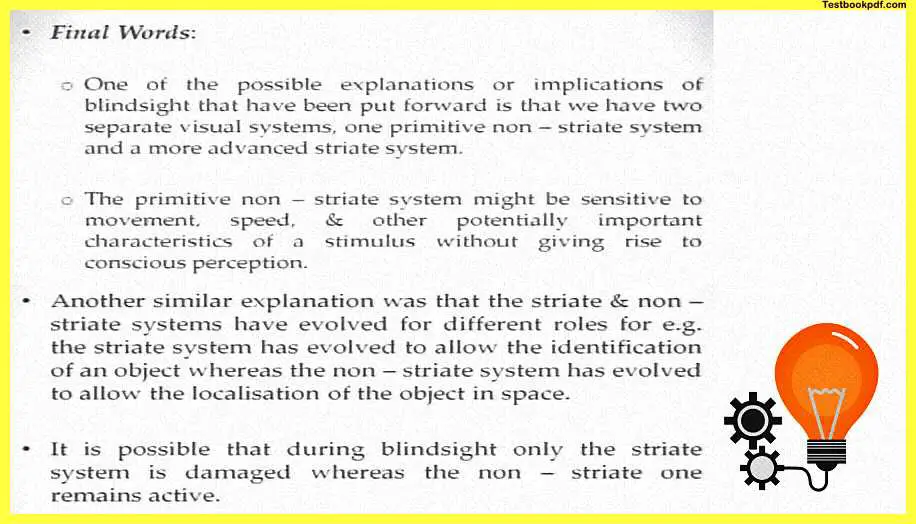
So one of the possible explanations or implications of blind Sight that have been put forward is that we have two separate visual systems one slightly primitive non-straight system that does not really build up on the straight cortex area and a more advanced straight system that is the enhanced area wherein we do all kinds of complex calculations the primitive non-state system might be sensitive to movement speed and other potentially important basic low-level characteristics giving without even giving rise to conscious perception.
So these calculations are so low level or so simple or initial to do that they do not really need to be consciously known that you are calculating the motion or you are calculating the shape or color etcetera the other similar explanation was that the straight and non-straight systems have evolved for different roles, for example, the straight system has evolved to allow for the identification of an object whereas the non-stereo system has just evolved for the localization of an object and it is possible that what is happening during blind Sight is that only the street system is damaged whereas the non-state system remains active and remains preserved and that non-state system is basically leading to the incidences of blight side in patients having scotoma patients having blind regions because of damage to the street cortex this was all about the blind Sight we have talked about.
- Disorders of perception
- Synesthesia
- Blind Sight
Unilateral Spatial Neglect (USN)
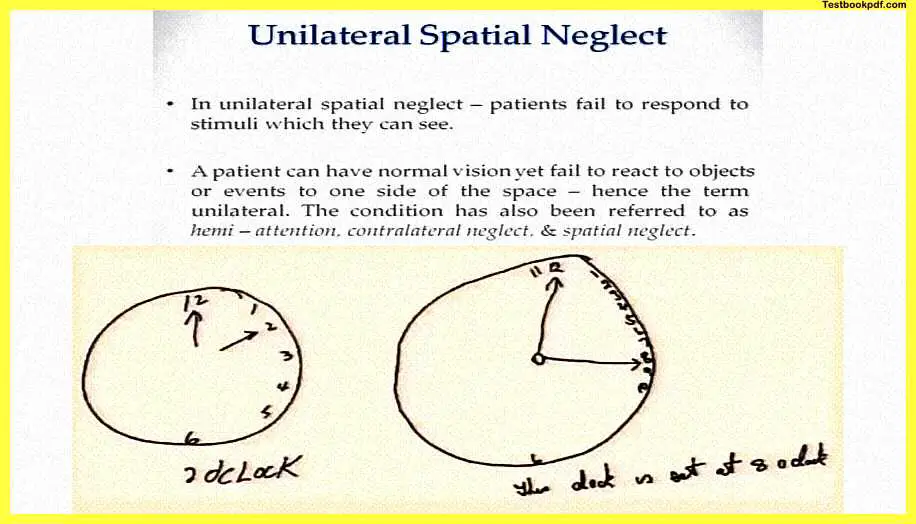
Let us now turn towards disorders which might more be disorders of attention than perception some of these very interesting disorders that one comes across is the disorder called unilateral spatial neglect there are other names for the same disorder as well say for example Hemi attention or contra lateral neglect or spatial neglect etcetera.
Now what happens in this particular disorder in unilateral spatial neglect that’s what we will refer to this as usn patients do fail to respond to stimuli which they can actually see so there could be a patient who has a normal vision but still fails to react to objects or events to one side of the space hence this is termed unilateral say for example there could be a patient who is having some deficit in the left part of the brain and will basically neglect everything that is forming in the right visual field even though the visual apparatus is completely intact even though everything is actually seen but the patient does not interact with that object they do not report seeing that object they completely report being oblivious to that object’s presence.
So you can see where this is the drawing by a patient of unilateral spatial neglect and you see that if you ask this person to draw a clock this person draws all the numbers only to one side of the visual field and does not draw anything to the other side it’s not that the eyes are not working again it’s not a disorder of visual perception is basically that this person is not being able to attend anything that is on the contralateral visual field this is what is called unilateral spatial neglect.
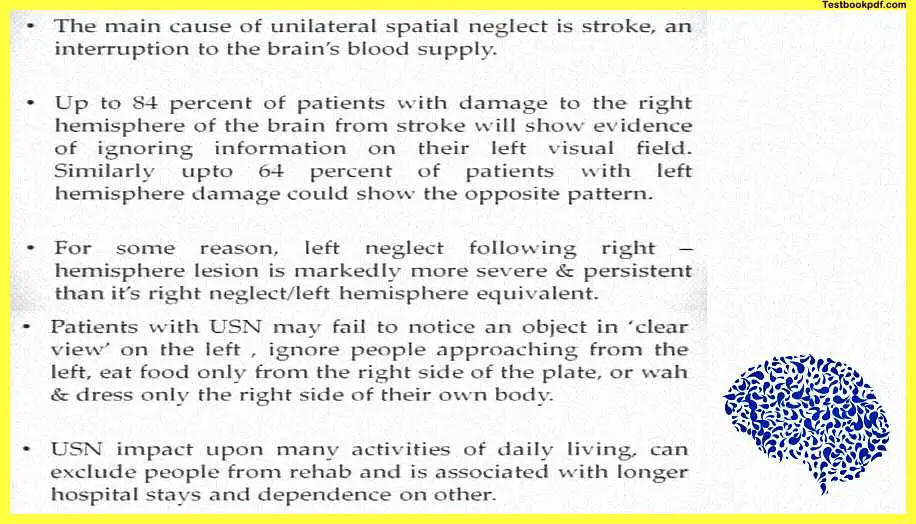
Now the main cause of unilateral spatial neglect is a stroke or hemorrhage which is basically an interruption to the brain’s blood supply up to 84 percent of patients with damage to the right hemisphere of the brain from stroke will show evidence of ignoring information on the left side of their visual field similarly up to 64 percent of the patients with damage to the left hemisphere could show the opposite pattern they will start ignoring information on the right hemisphere.
Now for some reason and it has been shown that the left neglect following right hemisphere damage is markedly more severe and persistent than right neglect following left hemisphere damage because probably the right temperature still does some of the remaining processing.
Now patients with usn unilateral spatial neglect may fail to notice an object in clear view on the left side they ignore people approaching from the left side they would eat food only from the left side of the plate they would basically dress only on the right side of the body there are interesting anecdotes about usn you might find in a lot of books in neuropsychology that there was this patient who was suffering from unilateral spatial neglect every time he would go on to shave or go on to dress he’ll just shave one side of the face and wear shirt or pant only on one side of the body and not on the other side it’s because this person is not being able to attend to anything that is on the contralateral hemifield.
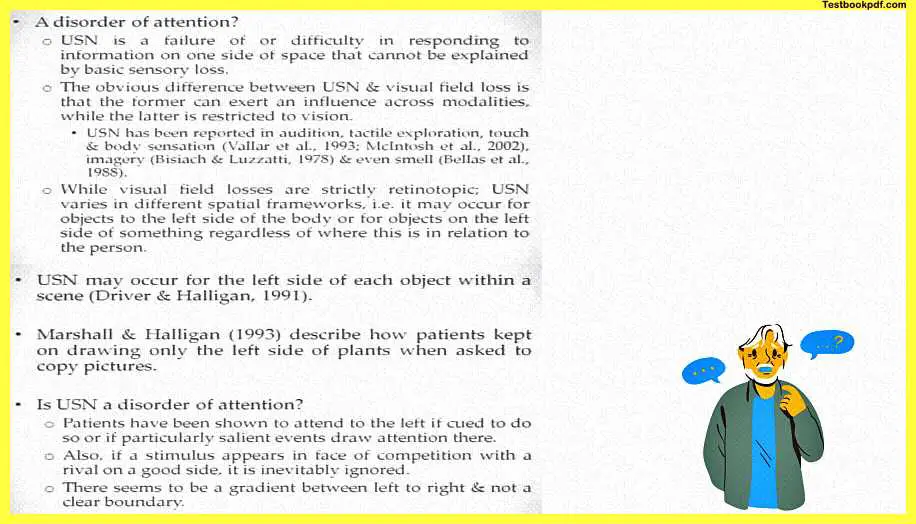
Now usn if you kind of dwell on the kind of description I have given of this particular disorder may impact people’s daily living may exclude them from rehab and is associated with longer hospital stays and dependence on the other if a person is not capable of really looking at anything on one entire side of the visual field obviously the person would need a lot of help even doing daily chores like brushing their teeth or shaving and things like that a disorder of attention so there has been considerable debate about this as well so usn seems to be a failure of or a difficulty in responding to information on one side of the space that cannot be explained by any sensory loss there is no basic sensory loss here the visual systems are intact and functioning normally.
Now the obvious difference between unilateral spatial neglect and visual field loss is that the former can exert influence across modalities that the usn can actually exist across modalities hearing might also be affected listening might also be affected while the visual field loss things like in blind Sight are basically limit limited to one modality only.
Now usn has been as I was saying reported in audition tactile exploration touching body sensation etcetera while visual field losses are strictly retinotopic usn varies in different spatial frameworks that are it may occur from objects to the left side of the body or for objects on the left side of a particular something says for example if I am looking at a particular car I might not see the left side of the car but only the right side of the car so it can be in that sense as well now usn may occur for the left side of each object within a scene so if you are actually a patient of usn you are looking at a particular painting you might not be able to see anything on the right side of painting or say for example if you are having right hemisphere damage you not be able to see anything on the left side of the painting.
Now marshall and halligan 1993 describe how patients kept on drawing pictures only of the left side of the plants when asked to copy pictures so they gave people these drawings to copy and they would consistently only copy the left side of the plants but not the right side because they are not being able to see that is usn again a disorder of attention patients have been shown to attend to the left if cued to do so so this is interesting because the visual sensory system is working fine if you can somehow get them to attend to this neglect site they have been shown to be able to attend that this is something which will kind of establish that this is more a disorder of attention than perception also if a stimulus appears in face of a competition with a within a rival with a rival in the good side then it is inevitably ignored.
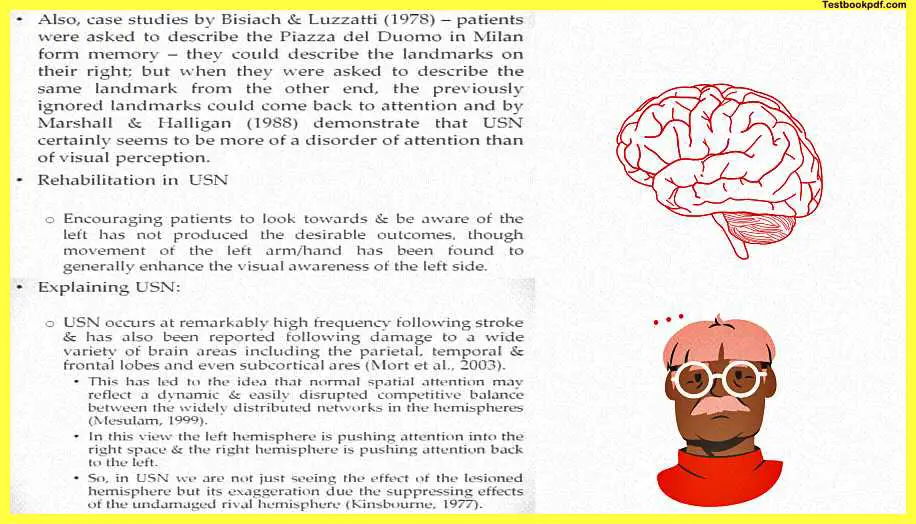
For example, you are giving two stimuli to people one is on the left side one is on the right side and the left side is your neglected side if you could draw attention to the left side the person might be able to see it but if at the same time there is a competing object on the good side that is the right side this competition will lead to this ignored part being ignored permanently now there seems to be a gradient also between the left to right and there is no clear boundary say for example till a particular point the person will see after that the activity or the experience of that object will be going on and tapering off so there have been a lot of studies say for example case studies by Bashir and lusharty in 1978 they what they did was they asked the patients to describe safer and describe the piazza del duomo which is a famous landmark in Milan and they basically were asked to describe these things or draw these things from memory.
Now interesting thing was they would they could describe the landmarks on their right but when they were asked to describe the same landmark from the other end so say for example the situation was stand on the north corner and explain and describe all the landmarks so these people will describe everything on the right from the north once they had given all of these descriptions they were said change the ends go to the south end and again describe whatever you see this time whatever landmarks they had left in the previous description came to the senses and they could actually describe the entire thing so this is again a demonstration of this being more a matter of attention than perception it is due to something that is wrong with the brain that these of these objects to this contralateral hemi field is completely ignored or completely missed and cannot even be accessed by memory martial and halligan they also did a very similar demonstration with the usn patients wherein basically they say that this seems to be having similar findings that this seems to be more of a disorder of attention than visual perception what could be the possible rehabilitation process in usn.
So encourage we could encourage patients to look towards and be aware of the left side and that has basically not really been able to produce a lot of outcomes though however the movement of the left arm or some kind of movement the left visual field has led to participants being able to attend to things in the neglected visual field as well let us try and explain what usn is about so usm basically occurs at a remarkably high frequency following stroke and is also been reported following damage to a wide variety of brain areas including the parietal temporal and frontal lobes even also subcortic subcortical areas.
Now this has led to the idea that normal spatial attention may reflect a dynamic and easily disruptive competitive balance between the widely distributed networks in the hemisphere so it says that all of these areas of visual processing perceptual processing and memory they are competing within the two hemispheres so in this view what they say is that the left hemisphere is put pushing attention towards the right space whereas the right hemisphere is pushing attention towards the left space and in a normal individual this is balance so that you get to attend both the spaces in unilateral spatial neglect what happens is we are not really just seeing the effect of the legioned right hemisphere or the lesion left hemisphere but also its exaggeration due to the fact that the good hemisphere the intact hemisphere is kind of suppressing everything out of that particular visual field so its exaggeration due to the suppressing effects of the undamaged hemisphere is basically probably leading to this kind of neglect of this particular hemifield.
Visual Agnosia
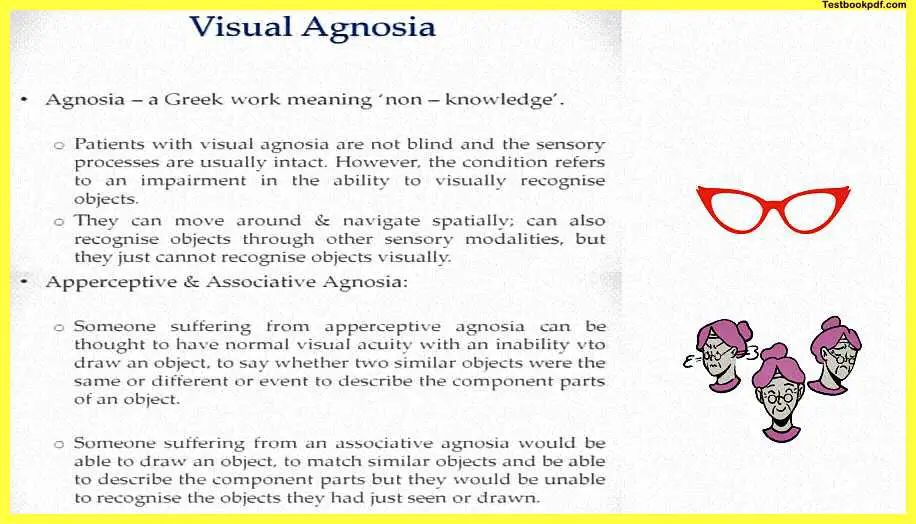
Agnosia basically comes from the greek word agnosia means no knowledge so visual agnosia means “no knowledge” visually of something now patients with visual ignore are not really blind and the sensory processes are usually intact however the condition refers to an impairment in the ability to visually recognize object this might also be coming out as a disorder of attention and perception now they can move around and navigate especially everything is fine they can also recognize objects via other modalities say for example there is a patient when she was asked to look at a candle and tell what this is named the object she was not being able to do that but if she was asked to take the candle in the hand touch it and tell what this candle is she could do it perfectly well so these people just cannot recognize objects visually that is why the disorder is termed as visual agnosia.
Now two kinds are proposed apperceptive agnosia and associative agnosia someone suffering from apperceptive agnosia can be thought to have normal visual acuity with an inability to draw an object to or to say whether two similar objects are the same or different or even to describe the components of this object so they are not being able to build the percept in the first place someone on the other hand suffering from associative agnosia would be able to draw an object or match similar objects to this particular object and would also be able to describe the components of this particular object but they would be unable to recognize the objects that they had just seen or drawn so in that in these people the con the problem is not with creating a percept but the problem is with associating the percept to whatever knowledge that the person already has so here in you can see the drawings of apperceptive agnosia patients so they are not really even being able to draw these very simple figures that would be otherwise rather easy to do from from the perspective of normal individuals.
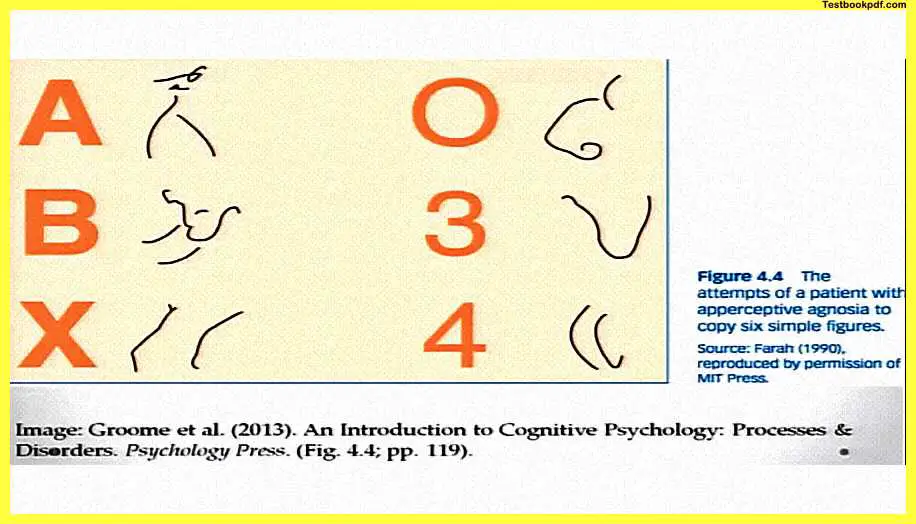
Now lizard in 1890 proposed that these two stages apperceptive and associated with nausea are rather hierarchical and sequential in the first place so he says that in the perceptive stage of perception the elements or the components of the objects are established and in then in the associative stage these are integrated to form particular objects and then linked to the knowledge which will help you identify and recognize these objects this would mean that the patients with pure apperceptive agnosia have an intact store of knowledge about objects but they are unable to distinguish the shape of the objects because they are unable to identify the objects visually they are not being able to create that percept to link to that knowledge but patients with pure associative Ignacia are rather able to perceive the objects but are often able to Unidentified them now this principle was found useful in differentiating the patients with pure perceptive or associative ignore and those who could say for example the idea could be that those who could not copy had the apperceptive agnosia those who could at least copy but could not name had associative agnosia.
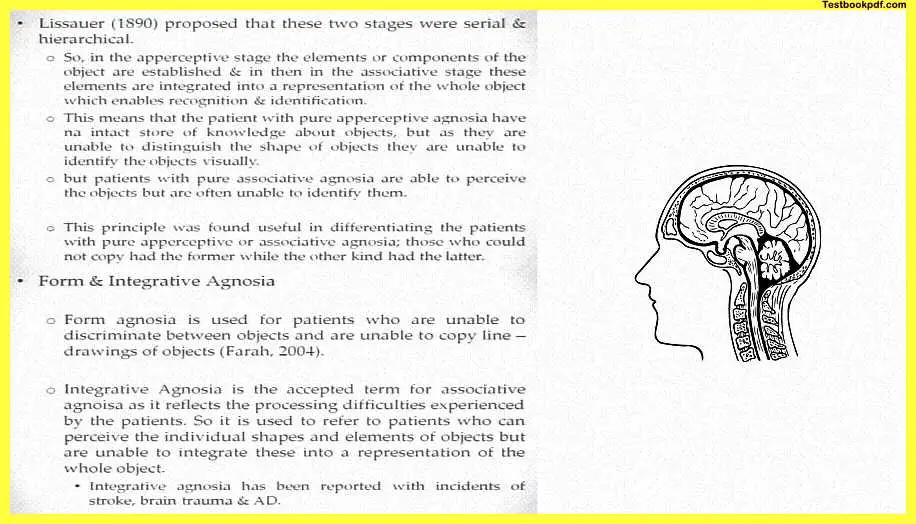
Now they could also be related forms form agnosia integrative agnostic form agnosia is basically very similar to what a perceptive agnosia is like so it is used for patients who are unable to discriminate between objects who are unable to copy line drawings of objects again it comes out of the research for phar19 2004 integrative agnosia is basically a term which is used nowadays for associative agnosia at this term it reflects the actual difficulties the processing difficulties that these patients are facing so it is used to refer to patients who can perceive the individual shapes who can kind of create the percept but they cannot integrate these shapes into a representation of a whole object say for example if you are showing this person a particular let us say a television he might be able to get this rectangle shape and the square shape and those kind of things but will not be able to integrate these shapes to form the particular object and hence he will not be able to name that object.
Now how would be living with visual agnosia patients say for example Aja which was reported by Humphries and redock with visual form agnosia actually experience a very confused and distorted visual world almost everything feels distorted nothing seems really familiar and even basic forms are indistinguishable from each other because they are just geometric shapes line drawings lines and forms all mixed up into each other nothing really identifying itself as a unique object it’s almost like looking at the world through a very powerful microscope wherein despite seeing all the details of everything that is around you it’s hard to put together a mental picture of these objects now Goodell and Milner they describe such a patient miss d who had severe visual form agnosia as a result of carbon monoxide poisoning.
animate versus inanimate objects
Now despite being unable to recognize visual objects from their shape she could use the surface characteristics like texture and color to help recognize objects so other modalities are working completely fine is just that they are not being able to associate or integrate this information visually also it there could be a difference in perception between animate versus inanimate objects so the patient was named essay who could identify animate objects much better than the inanimate objects while another patient Aja could identify inanimate objects much better than the animator so these kinds of dissociations have also been reported similarly other patient JBR could name the line drawings of many non-living objects such as a spade or a hairbrush or hammers things like that but you could not name the line drawings of living things say for examples such as a dog or a fly or musical instruments such as trumpet and this is reported by the studies of Warrington and chalice in 1984.
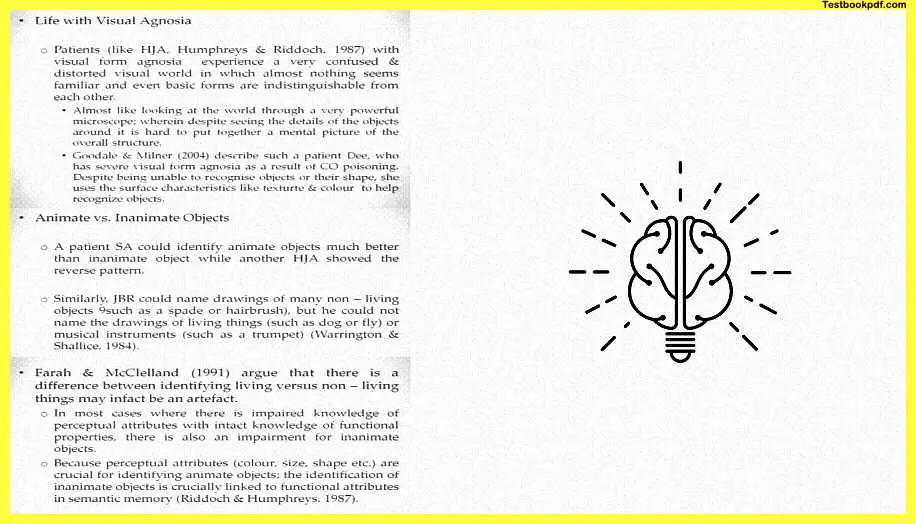
Now Fahren McLelland in nineteen ninety-one argued that there is a difference between identifying a living person versus a non-living person and this different basically this difference which is been coming out it might just be an artifact so saying that in most cases whenever there is impaired knowledge of perceptual attributes with intact knowledge of functional attributes there is also an impairment for inanimate objects so this impairment in recognizing inanimate objects is not really a perceptual impairment or attentional impairment is basically an impairment that you do not know about the perceptual attributes but you at least know about the function part now because perceptual attributes are crucial for identifying inanimate animate objects the identification of enamel inanimate objects is crucially linked to the functional attributes in semantic memory.
What is Prosopagnosia?
a prosopagnosia is basically a form of agnosia that relates to faces the term processor agnosia was first and used by Bodamer in 1947 who examined 10 patients who he believed showed a face-specific deficit.
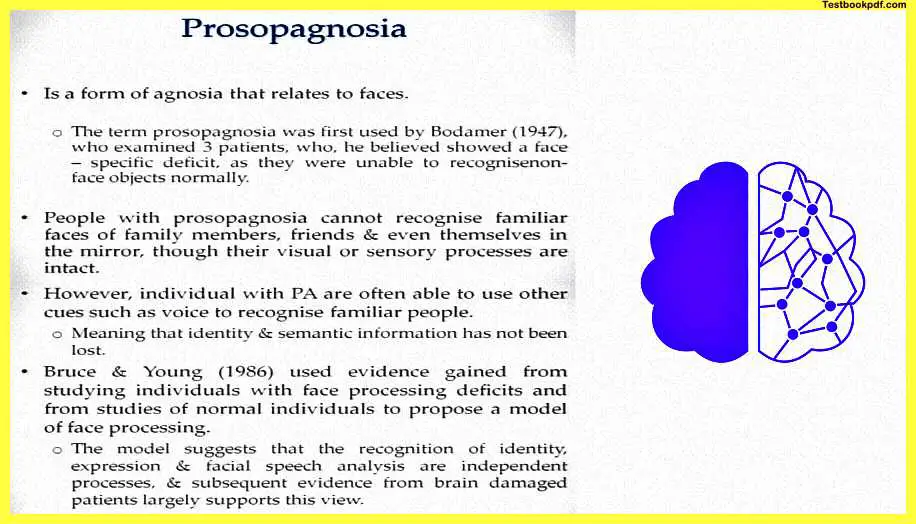
so these people were not able to recognize non-face faces but they were able to recognize non-face objects completely normally people with prosopagnosia cannot even recognize familiar faces of family members friends or even themselves in the mirror though their visual and sensory processes otherwise for all other classes of objects are working completely fine however individuals with cross diagnosis are often able to use other cues such as voice recognition to recognize familiar people it just means that the identity and the semantic information has not been lost it’s just that the visual association of the face is gone bruce and young did a lot of work with prosopagnosia and they use this evidence gained from studying individuals and from studies of normal individuals as well to produce a model of phase processing the model suggests that the recognition of identity and expression facial speech analysis are independent processes and subsequent evidence from different brain damage patients have actually supported this particular view.
So this is the model here it shows that expression analysis facial speech analysis or face recognition unit or say for example viewer centered descriptions of faces are all independent things identity is an independent process and all of these kinds operate in cooperation with each other to get you the overall percept of somebody’s face though they are functionally rather independent of each other.
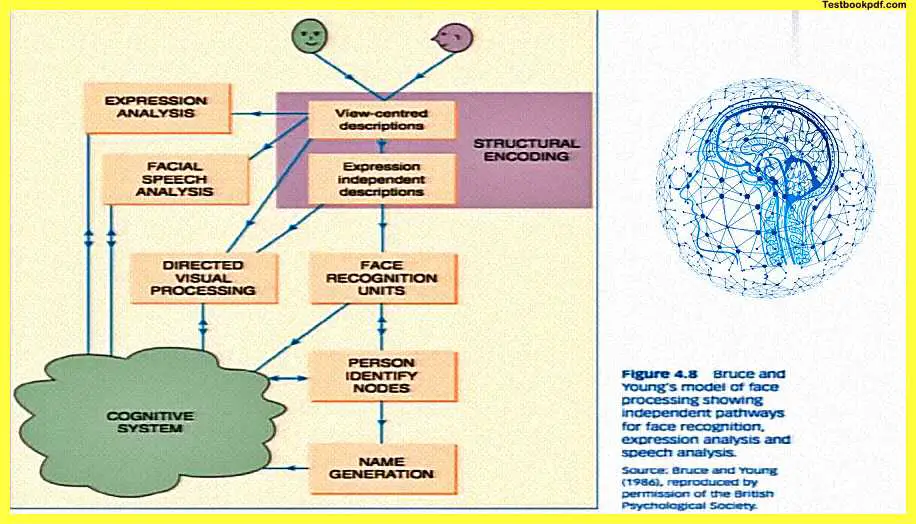
Now given that phase recognition is one of the most demanding and sophisticated tasks that our visual system undertakes it is completely unsurprising that an impairment in this ability can be acquired through brain damage so ha there has to be something wrong with the brain for this kind of deficit to emerge brain damage really leads to complete destruction of the ability to recognize faces there is a lot of variation in the severity of impairment into the kind of experience that these patients of prosopagnosia are having also they might have different levels of preserved skills for facial processing as well and is not completely gone.
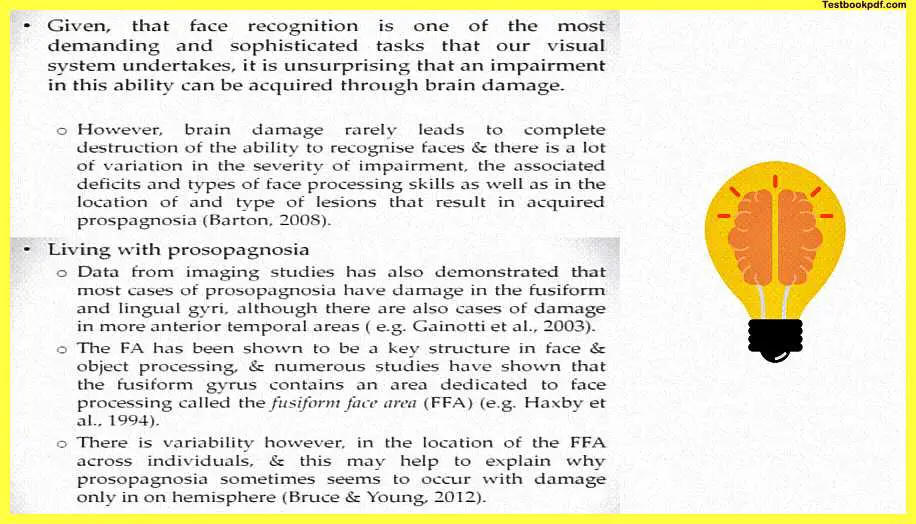
Now living with prosopagnosia so data from imaging studies have also demonstrated that most cases of prosopagnosia have been found to have damage in the fusiform and the lingual gyri although there are phase cases of damage in the more anterior temporal area the phase recognition is also being shown as a key and the fusiform area has also been shown as a key structure in phase and object processing in numerous other studies and it has been shown that an area in the fusiform gyrus typically now known as the fusible phase area is a critical region in recognizing faces there is this variability however in the location of the fusiform face area in individuals and this may help to explain why prosopagnosia sometimes seems to occur with damage only in one one of the hemispheres.
Now such variation has led researchers to think that there is no single area in the brain that is responsible for crossing faces rather a distributed neural network of areas composed of many bilateral regions is involved in perceiving faces barton 2008 reviewed data from 10 patients and they concluded that severe impairments were found in patients with the in the bilateral occipital temporal lesions involving the fusiform gyrus which had led to prosopagnosia also he concluded that the right fusiform gyrus was involved in the Configural processing of faces and that memory for faces was more severely disrupted when these bilateral lesions also included the right anterior temporal lobe.
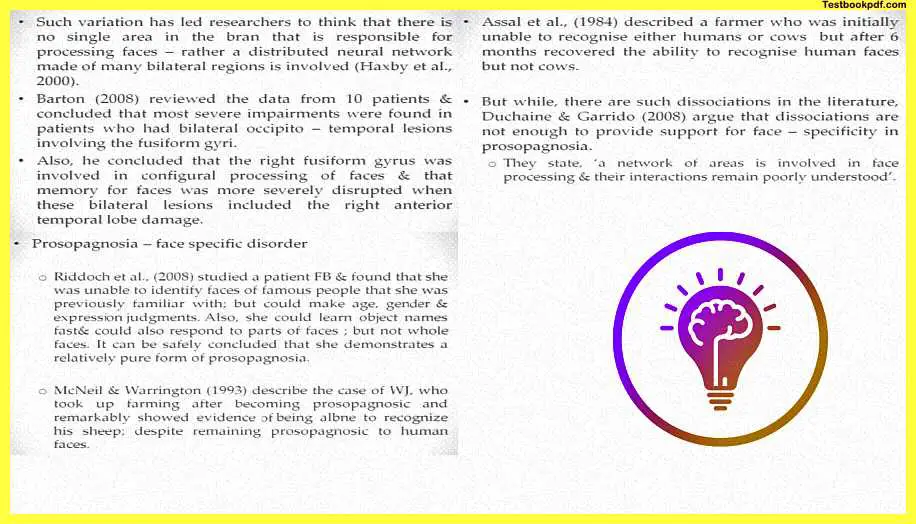
So again you can see that these different areas are involved in different ways in the processing of faces because face generally is a slightly complex percept now is pros of agnosia a face a specific disorder Riddoch and colleagues in 2008 they studied the patient FB and they found that she was unable to identify faces of famous people and those she was actually previously familiar with but could make age gender and expression judgments also she could learn object names almost as fast as other controls so it could be safely concluded from the studies on FB that she demonstrates a relatively pure form of prosopagnosia everything else is intact all other abilities are intact only the ability to recognize faces is suffering so that is why this was regarded as a pure form of prosopagnosia.
Now McNeil in Warrington in 1993 they describe a case of WJ who took farming and became prosopagnosic and remarkably showed the evidence of being able to recognize his sheep despite being remaining prosopagnosic to human faces Assal also described a farmer who was initially unable to recognize either humans or cows but after six months regain the ability to recognize humans but not cows Duchaine and Garrido also report that Duchaine these kinds of dissociations are not really enough to provide support for face specificity for prosopagnosia so this is all about disorders we have covered quite a few disorders both of attention and perception in the study.
Thanks for reading this article.
Read also:
